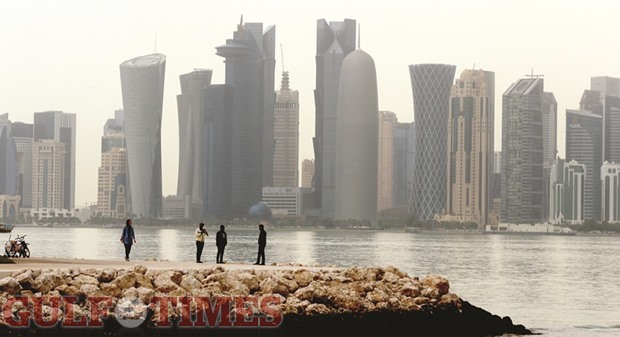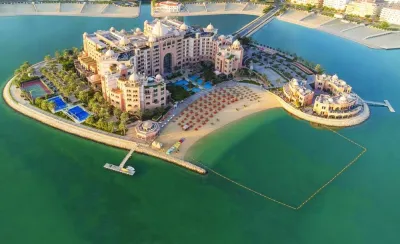If you’re wondering why the weather got cold, it’s because my dad complained that it was too warm to wear any of the jumpers that he’d brought with him on holiday. He’s in Doha visiting us at the moment, and apparently the jumpers took up a lot of room in his suitcase!
Whilst the cold snap may be making my dad happy, there are plenty of people here who are grumbling. Typically January is the coldest month of the year; the temperature in Doha usually climbs to 22C (72F) during the day, with a night time minimum of 13C (55F). Of course this is only the average and most years have a cold snap when the temperatures are much lower than this, and it certainly can feel chilly.
The weather here often feels colder than you might imagine looking at the thermometer. A temperature of 16C in the UK feels warm, but 16C in Doha seems surprisingly cold. In a large part, this is due to the amount of moisture in the air. In the UK, the air would be humid, which helps you feel warm. In Qatar, however, the air is incredibly dry. This encourages any moisture on our skin to evaporate, which requires a lot of energy. The energy used for this is from our bodies, which leaves us feeling colder.
The persistent wind in Qatar also makes it feel cooler than it actually is. The country is generally quite flat, and surrounded on three sides by the sea. This means there is precious little on the landscape to slow down the keen Shamal wind. The wind can therefore blow happily across the country unhindered, and as it bumps into us, it increases the rate at which heat leaves your bodies.
The buildings don’t help either. In Doha, our homes are designed to release heat, unlike those further away from the equator that need to retain as much heat as possible. Qatar’s hard tiled floors feel decidedly cold underfoot, unlike the ‘warmer’ furnishings used in northern Europe, such as carpets and wood. Our thick walls retain the summer heat for a while, but once they have cooled, it’s almost impossible to heat them back up again. A fan or an oil heater will have little effect, because as soon as they are turned off, the indoor temperature plummets.
All of this ensures that despite the mild reading of the thermometer, it can be difficult to feel warm in a cold snap. Having said that, there are many places in the region that are usually much cooler than Doha. For example, the average daytime temperature in Baghdad in December is 17C (63F) and the average night-time minimum is 5C (41F); in Kuwait, the average high temperature is 22C (72F) and the low temperature is 10C (50F).
Luckily, in Qatar the cold wind from the north is altered by the waters of the Gulf. The Gulf is generally fairly mild, so it warms the air. This ensures that the weather is usually not as cold in Doha as it is in Kuwait.
Last year, temperatures in Doha didn’t drop below 11C (52F) at night, but in 2012 a strong blast of cold air brought the temperature down to 9C (48F). Outside the city, the temperatures dropped even further, with Al Udeid recording a temperature as low as 4C (39F). This is properly cold, but elsewhere it was even colder. In Kuwait and Riyadh the temperature tumbled to -1C (30F), and in Baghdad, the temperature dropped even lower, reaching -4C (25F).
You’ll probably be relieved to hear that in the decades that we’ve been recording weather in Doha, the temperatures have never dropped below freezing. The coldest temperature recorded in the capital was 3.6C (38F), recorded back in 1964. Fortunately, this is something of an anomaly and it normally doesn’t get anywhere near this cold.
However the temperatures vary over the next few weeks, remember that the cool weather in Doha is usually short-lived. By the second half of February, it will be feeling much warmer, although it can often be quite soggy.
Statistically, February is the wettest month of the year, but the rain can make an appearance later in the year than most people realise. There are usually even a few days of rain in April, when the weather is changing from its winter set up to its summer regime. This rain can sometimes spill over into May, but as soon as it stops the heat starts in earnest. Between May and mid-July, the weather is extremely hot, but dry. The humidity kicks in in the middle of July. This ensures that the most difficult time of the year is between mid-July and mid-September, and after that the heat gradually subsides.
All this goes to show that if you’re wishing it wasn’t so cold, be careful what you wish for! The cool weather won’t last for long and by the end of May, the heater and your jumpers will be a distant memory in the back of your wardrobe.

Despite the mild reading of the thermometer, it can be difficult to feel warm in a cold snap in Doha. Photo by Jayan Orma

